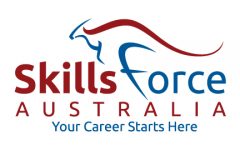DRSABCD: Unveiling the Lifesaving Acronym
In the hustle and bustle of our daily lives, emergencies can strike at any moment. It’s crucial to be equipped with the knowledge and skills to respond promptly and effectively. One powerful tool in the realm of first aid and CPR is the acronym DRSABCD, serving as a guide for swift and efficient action. Let’s delve into each element of this acronym and understand how it can be a lifesaver in critical situations.
- D – Danger
The first step in the DRSABCD protocol is assessing the danger at the scene. Before rushing to aid someone in distress, it’s crucial to ensure the safety of both the victim and yourself. Potential hazards can range from electrical wires to oncoming traffic. By taking a moment to evaluate the surroundings, you pave the way for effective assistance without compromising anyone’s well-being. - R – Response
Once the danger is mitigated, the next step involves checking the victim’s response. Are they conscious? Do they respond to your voice or touch? This step helps determine the severity of the situation and guides subsequent actions. Remember, a quick and accurate response check sets the foundation for timely intervention. - S – Send for Help
Underlining the importance of quick response, this step involves calling for professional medical assistance through Triple Zero (000) or asking bystanders to make the call. The article emphasizes the necessity of staying on the line and, if alone, instructs a crucial step before leaving to seek help. - A – Airway Management
Ensuring an open airway is crucial for the victim’s survival. Learn the techniques to safely tilt the head and lift the chin, allowing for unobstructed breathing. This seemingly simple step can make a world of difference, especially when every second counts. - B – Breathing Check
Learn the proper way to check for breathing and act accordingly. If the person is not breathing, it’s time to initiate CPR—a skill that can be the bridge between an emergency and professional medical assistance.

- C – CPR (Cardiopulmonary Resuscitation)
CPR is the heartbeat of the DRSABCD process. Learn the correct ratio of chest compressions to rescue breaths, and understand the significance of quality CPR in sustaining life until professional help arrives. It’s not just about doing something; it’s about doing it right. - D – Defibrillate
Automated external defibrillators (AEDs) play a crucial role in the DRSABCD sequence. Understand how to use an AED safely and effectively. These devices are designed to deliver electric shocks to restore a normal heart rhythm, and your knowledge can make a significant impact in a cardiac emergency.

Training and Certification
Australia boasts several reputable organizations that provide first aid courses and certifications. Among them, Skills Force Australia stands out as a leading Registered Training Organisation (RTO 52354), specializing in delivering high-quality, nationally accredited training. Our commitment to excellence and a focus on specific industries make us a trusted choice for individuals and businesses seeking top-tier first aid education.
Skills Force Australia offers a range of courses, including but not limited to:
- CPR and First Aid
- Fire Warden and Chief Fire Warden Training
- Work Safely at Heights
- Confined Spaces Entry
- Gas Test Atmospheres
- Work in Accordance with an Issued Permit
- Emergency Planning Committee Training
Our courses are designed to empower participants with the skills and confidence needed to respond effectively in various emergency scenarios. By choosing Skills Force Australia, individuals gain access to expert trainers, hands-on practical exercises, and a learning environment that aligns with the highest industry standards.
DRSABCD serves as a comprehensive framework for effective emergency response. Understanding the significance of each step empowers individuals to take immediate and informed action, potentially saving lives in critical situations. As advocates for community well-being, the mastery of DRSABCD is not just a skill—it’s a responsibility we all share.

